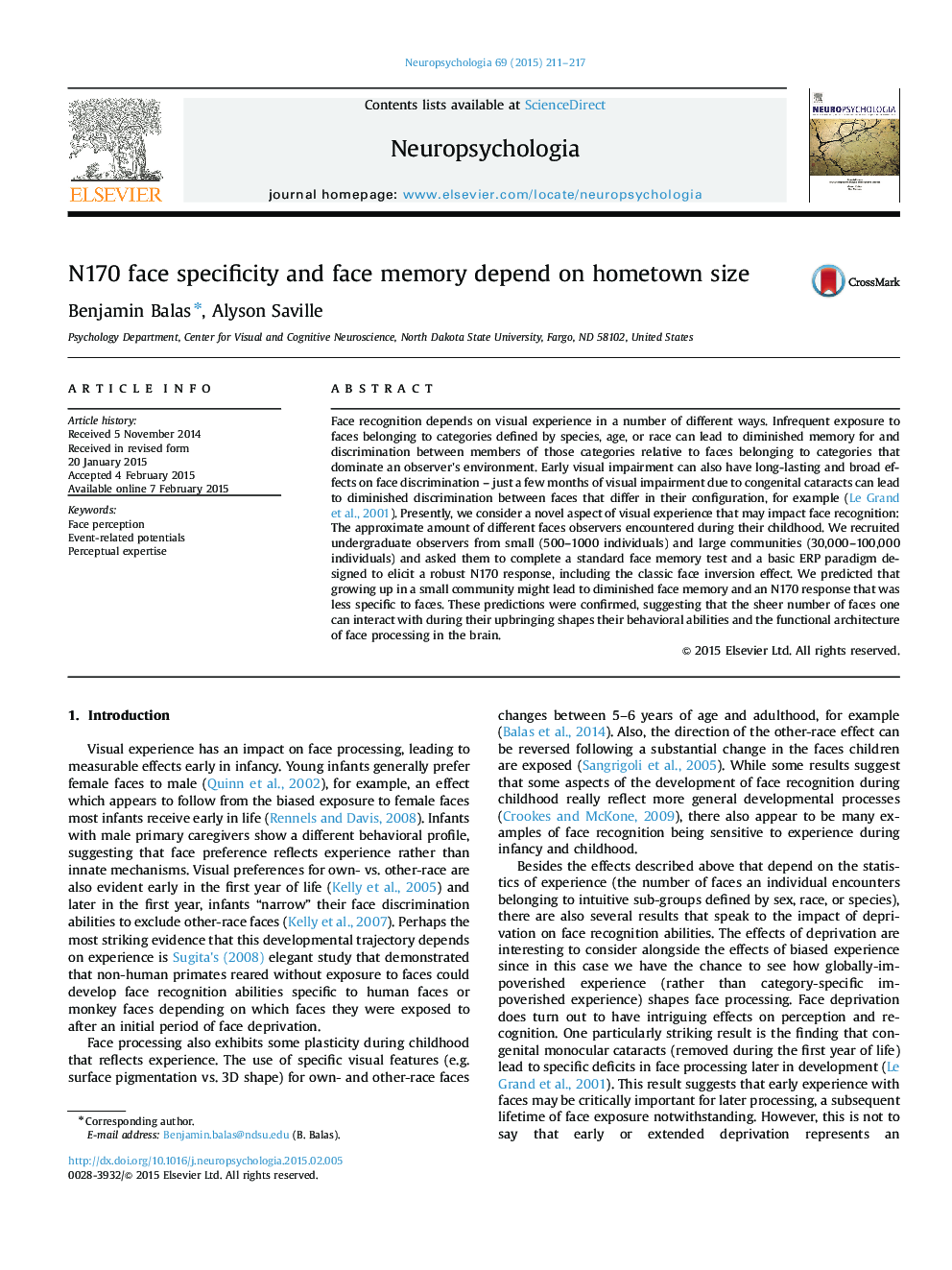| Article ID | Journal | Published Year | Pages | File Type |
|---|---|---|---|---|
| 7320426 | Neuropsychologia | 2015 | 7 Pages |
Abstract
Face recognition depends on visual experience in a number of different ways. Infrequent exposure to faces belonging to categories defined by species, age, or race can lead to diminished memory for and discrimination between members of those categories relative to faces belonging to categories that dominate an observer's environment. Early visual impairment can also have long-lasting and broad effects on face discrimination - just a few months of visual impairment due to congenital cataracts can lead to diminished discrimination between faces that differ in their configuration, for example (Le Grand et al., 2001). Presently, we consider a novel aspect of visual experience that may impact face recognition: The approximate amount of different faces observers encountered during their childhood. We recruited undergraduate observers from small (500-1000 individuals) and large communities (30,000-100,000 individuals) and asked them to complete a standard face memory test and a basic ERP paradigm designed to elicit a robust N170 response, including the classic face inversion effect. We predicted that growing up in a small community might lead to diminished face memory and an N170 response that was less specific to faces. These predictions were confirmed, suggesting that the sheer number of faces one can interact with during their upbringing shapes their behavioral abilities and the functional architecture of face processing in the brain.
Related Topics
Life Sciences
Neuroscience
Behavioral Neuroscience
Authors
Benjamin Balas, Alyson Saville,
